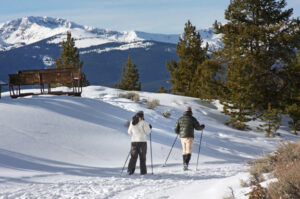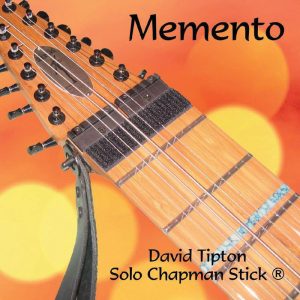By George Sibley
This snow issue of Colorado Central sends me back almost forty years to some personal discoveries about how best to live with the stuff.
Growing up in America in the Age of the Automobile, it had not really occurred to me that the winter in snowy places had different levels on which life could be lived. The snowplow was a ubiquitous presence in life in the mountains of Colorado – or the hills of Pennsylvania, where I spent my earliest decades. Everywhere really, in the northern half of the so-called Temperate Zone.
The snowplow kept us “down on the ground” because that was where the automobile lived (despite those ads for hunky SUVs plowing through deep snow). And after the plow went by, we went to work with the snowshovel to get our driveways and walkways down to the same level.
In a place like Crested Butte, which gets 200-300 inches of snow in an average year (and there are no average years), living at the level of the automobile begins to be pretty expensive, as well as very time-consuming. The town of Crested Butte – with a population still hovering around the 1,000 mark, plus or minus depending on the economy (which depends on snow) – budgets $150,000 a year to operate and maintain its small fleet of snow-movers, but that may go to $250,000 in a big snow year. Consider too, the business and family time lost shoveling walks and entries down to that level. And pity the poor homeowner who is away when the plow leaves a three-foot moraine of snow blocking your path that has set up like concrete by the time you return – sometimes it’s necessary to get out the garden shovel or even the axe to bust it up.
By the time the depths of winter (as it were) have you shoveling the light fluffy new stuff up onto a compacting snowpack as high as your head, you are no longer mystified by how the light fluffy stuff could ever settle into a glacier a thousand feet thick, capable of grinding granite to sand and gouging out big bowls and cirques.
Having grown up with the Age of the Automobile, and therefore accepting as normal this stubborn staying at ground level despite the piling-on of snow – it was a liberating surprise back in 1971 when my family and I moved to Gothic, a few miles north of Crested Butte but four or five miles over the edge from plowed-out civilization, as caretakers for the Rocky Mountain Biological Laboratory. For four winters, we parked our car in a friend’s driveway near the end of the road – and from there to the cabin, and around the cabin, we basically lived up on the surface of the snow. More snow, less snow, didn’t matter; the surface stayed at the surface and that’s what we traveled on.
Of course we’d been downhill skiing for years, but the technology there – the lifts, the packing and smoothing machines, not to mention the increasingly high-tech skis and boots we buckled into – inserts a layer of civilization between the downhill skier and the winter, closer to automobile territory than to wild nature.
Clamping our hiking boots onto our wooden Bonnas with the old Silvretta cable bindings – this was 1971, remember – then skiing home over unpacked and sometimes untracked snow, was to enter a different world.
Life there was most comparable to living on an island in the middle of a big lake; up on the surface of winter, you realize that skis and snowshoes are really more like boats than recreational devices. Different kinds of boats for different kinds of activities. The skis are canoes, kayaks, adventure vehicles for covering a lot of winter’s surface fairly quickly – but best for traveling light too. Every additional pound you put in a pack on your back deepens your track and diminishes the joy of the glide-stride incrementally – or massively if you fall down on a slope and the pack slides up over your head.
For other activities up on the surface of winter, skis are not useful at all. We had some daily chores, like bringing water to the cabin from the springbox fifty yards away, and on a nice day going up into the woods for a couple more dead-standing aspen to supplement the wood supply gathered in the fall. For work like that, snowshoes – “webs” – were essential. Webs are to life on the surface of winter what tractors are to the farmer: work vehicles, good for granny-gear activity, but you wouldn’t want to drive them over Monarch Pass.
M
odern snowshoes or webs are wonderful lightweight aluminum contraptions with teeth on the bottom to prevent slipping. But snowshoes like that weren’t around when we were caretaking in Gothic; ours came from Tony Mihelich’s Hardware and Conoco, and only cost us about $25, suggesting they’d been on the shelf for a long time. They had wooden frames with rawhide webbing, all heavily shellacked. “Heavy” pretty well describes those webs, but they were fine for laying out the trail up to the springbox or for maneuvering in the woods.
Or for laying the path to the outhouse. For a couple of days during and after a storm, it was necessary to use the webs to go to the outhouse, which required some foresight and planning because that also meant putting on boots and getting buckled into the webs – then unbuckling outside the outhouse in order to maneuver therein. But after a day or two of sun on the paths, it was possible to walk – a little carefully – on the paths with just house shoes. Step off the path, though, and you were in deep trouble.
Some shoveling did have to be done, at both ends of the paths – shoveling up to the surface of winter from the cabin door, and down to the springbox or the door of the outhouse. But that was a lot better than trying to keep the entire paths open down to ground level.
The sunny days of March coupled with cold nights created such a crust on the snow that it was possible to walk anywhere the sun had been on the surface of winter without falling through – until mid-morning, when the crust softened. We could ride our bicycle on the surface of winter those mornings – no “fat bikes” then either.
As winter moved toward what passes for springtime in the Rockies, the surface of winter gradually deteriorated, and became downright treacherous in the afternoon. The road through the Gothic townsite surreptitiously turned into an underground stream – a fact I discovered the first winter, skiing home late one afternoon with a full pack (eggs, a head of lettuce and other veggies and fruit, and half a gallon of Carlo Rossi’s finest). A hundred yards from home, I crashed through the entire snowpack which then caved in on top of my skis, and really cold water was running over and into my boots. I honestly don’t remember exactly how I got out of that mess; some things you just don’t want to remember. But that was when we learned that, in April and May, if you go to town and can’t or don’t want to get back by midday, you’d better plan to sofa-surf in town for the night and head home hungover next morning.
But such downsides notwithstanding – I treasure those memories of life lived on the surface of winter rather than at the level of the automobile. Working on a short history of Crested Butte that first winter in Gothic, I learned that the town had basically lived on the surface of winter until the train ceased to run in the early 1950s; prior to that time, car owners (not yet everyone) had simply put their cars up on blocks for the winter, and relied on horse-drawn sleds to get around and human traffic to keep the streets packed down enough to walk on without snowshoes. But once the train was gone, the state started plowing the road to Crested Butte, and the town devolved to the level of the automobile. Could we go back to that? Maybe someday we’ll have to, or leave, for god knows what.
Snow – from my skiing days, I remember even more special moments at the surface of winter, when the surface of winter becomes not just a planar surface but more of a zone, segueing from snow coming down into snow already down, and you are floating through that zone of either-neither in a slow-mo descent, not sure whether you’re down in or up on or even slightly above the surface of winter, with butt, legs, knees, heels and skis working a linked rhythm to slow the descent, make it last as long as possible, forever if possible.
Life is just a little better on or near the surface of winter.
George Sibley lives, writes, and poles his boards on the surface of winter – when winter actually shows up. Pray for snow. george@gard-sibley.org


